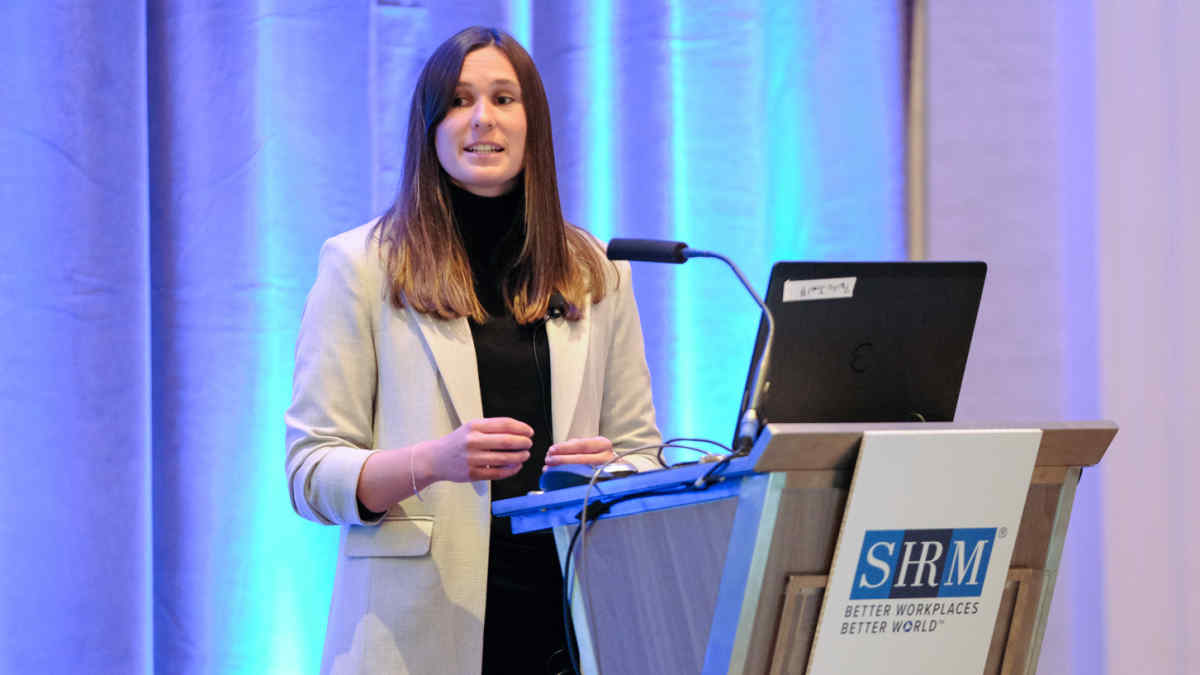

?The SHRM Research Institute and Boston College released preliminary findings from new research about equity in the workplace on Oct. 25 at the SHRM INCLUSION 2022 conference in San Diego.
The joint report, National Study of Workplace Equity: Identifying the Root Causes of Inequity in the Workplace, details possible causes of racial, ethnic and gender biases in workplaces.
“Employers understand there is a new urgency for innovation and fresh perspectives for diversity, equity and inclusion (DE&I),” said Ragan Decker, Ph.D., a lead researcher with the Society for Human Resource Management (SHRM). “But studies show that inequities are a common feature of U.S. organizations.”
A survey of 1,062 U.S. organizations showed that:
- 20 percent of HR professionals say their organization’s overall policies and practices are not at all fair or only somewhat fair.
- 25 percent of organizations say their older workers have experienced bias within the past two years.
- Between 25 percent and 28 percent of organizations say their employees have experienced bias within the past two years, with gender bias being the most common type.
- About 65 percent of organizations say DE&I is important, yet 63 percent have allocated little to no resources to these programs.
What Is Workplace Equity?
“The DE&I movement has placed more emphasis on diversity and inclusion than it has on equity,” said Kathleen Christensen, Ph.D., co-director of work equity at Boston College’s Center for Social Innovation. “Equity remains a challenge for organizations.”
Workplace equity refers to fairness of organizational systems and the absence of systematic and persistent disparities in the opportunities and resources available to employees, regardless of their demographic and social identities.
Workplace equity is related to:
- Job satisfaction.
- Employee engagement.
- Perceptions of inclusion.
- Retention of a diverse workforce.
Equity has captured headlines recently as equal-rights advocates, such as the U.S. Women’s National Soccer Team, have promoted the importance of equal pay. But it can also refer to equal representation in C-suite positions, pay transparency and a harassment-free culture.
Previous SHRM research has indicated that 27 percent of U.S. workers view workplace equity as the most important issue they face at work.
In assessing workplace equity, researchers evaluated the equity of 10 different employment systems:
- Job structures.
- Recruitment and hiring.
- Compensation and benefits.
- Orientation and onboarding.
- Supervision and mentoring.
- Training and career development.
- Performance assessment and feedback.
- Employee resources and supports.
- Promotions.
- Separations.
Researchers then developed an index to determine the systems that were more equitable and those that were less equitable at the time of the study. The systems with the highest mean equity scores were recruitment and hiring, compensation and benefits, and orientation and onboarding.
The systems with the lowest mean equity scores were employee resources and supports, job structures, and supervision and mentoring.
“A little over one-third of organizations have high equity, about half have moderate equity and 13 percent have low equity,” Decker said. “While these results are positive, it suggests that there is still progress to be made.”
Self-Auditing Is Key to Achieving Workplace Equity
SHRM and Boston College found that fewer than 4 in 10 organizations believe they exhibit high levels of equity. A common thread of successes among the most equitable employment systems were:
- Take a targeted approach to workplace equity. Fairness often varies across employment systems.
- Consider conducting equity audits. You can’t improve what you don’t measure.
- Hold one or more employees accountable for monitoring the fairness of employment systems.
The study also identified seven pathways that could increase equity in each of the employment systems: policies; practices; planning and evaluation; roles and accountabilities; culture; climate; and communication.
Roles and accountabilities is a pathway where equity could be stronger, the study showed. The results suggest that organizations are not consistently holding leaders accountable for equity in different employment systems.
“Accountability is best achieved when there is a council, staff or team, with participation from people of color,” Christensen said.
Decker and Christensen emphasized the importance of self-auditing in reducing systematic inequities within an organization. Christensen outlined five steps that companies can take to strengthen evaluation:
- Set goals and get buy-in.
- Collect the relevant data.
- Analyze the data.
- Take actions to remediate equity issues.
- Routinely monitor equity.
“Systematic bias is inadvertently written into the component of career systems,” Christensen said. “We need a systematic way of approaching inequities in the different employment system to ensure pockets of inequity do not continue to exist.”

